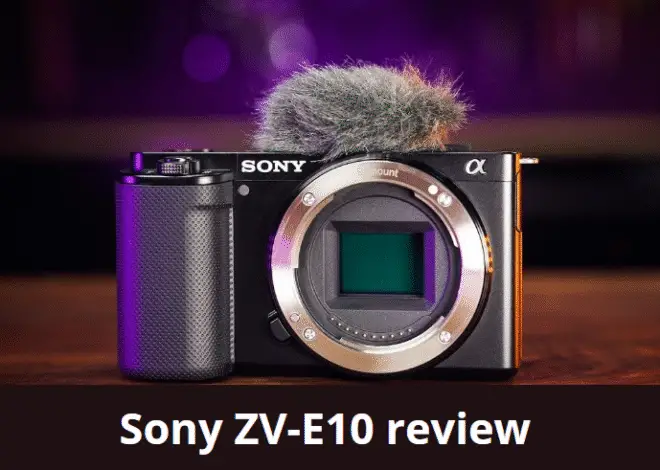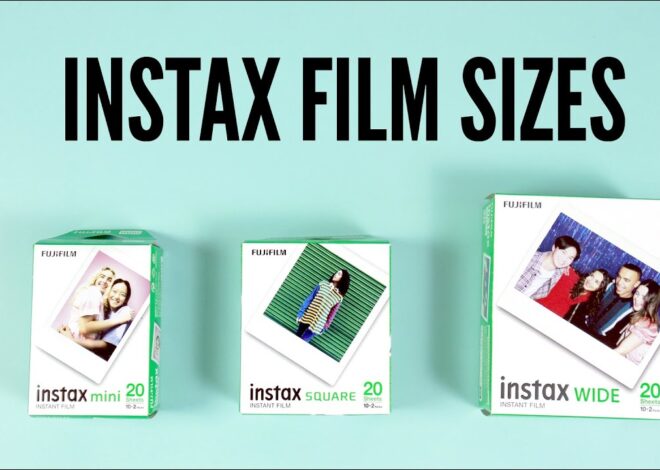
Sony A6500 vs. ZV-E10: Which Camera Will Be Your Best Pick?
As an Amazon Associate, I earn from qualifying purchases.
When comparing two models with similar attributes, such as the Sony A6500 and the ZV-E10, choosing the right camera might be challenging. Both cameras offer excellent features which help you do fine photography and filming.
They do, however, have a number of obvious differences, which will explain why you would favor one over the other.
So, take your time while reading this article as it is intended to help you choose the Sony A6500 rather than the ZV-EV10.
Sony A6500 vs. ZV-E10: Quick Comparison Chart
Some key differences between Sony A6500 vs. ZV-E10:
| Feature | Sony A6500 | ZV-E10 |
| Sensor | 24MP – APS-C CMOS Sensor | 24MP – APS-C CMOS Sensor |
| ISO Range | 100 – 25600 ( expands to 51200) | 100 – 32000 ( expands to 51200) |
| Screen | 3.00″ Tilting Screen | 3.00″ Fully Articulated Screen |
| Weight | 453g. | 343g. |
| Battery Life | 350 shots | 440 shots |
| Dimension | 20 x 67 x 53 mm | 115 x 64 x 45 mm |
| Video Resolution | 4K (UHD) – 3840 x 2160 | 4K (UHD) – 3840 x 1920 |
| Body | Built-in Wireless | Built-in Wireless |
| Viewfinder | 2359k dot Electronic viewfinder | No Viewfinder |
| Price | $1,499 | $664 |
| Release Date | October 2016 | July 2021 |
| Buying Link | Sony A6500 | Sony ZV-E10 |
Comparison Between Sony A6500 vs. ZV-E10
You may find some significant differences between Sony A6500 and ZV-E10, however, their features match in many ways. Thus, before getting into differences, let’s know about the similarities they share.

Sony A6500

Sony ZV-e10
Similarities between Sony A6500 vs. ZV-E10:
Sensor: A 24-megapixel APS-C sensor found in both cameras offers superior image quality and low-light performance.
Video: It is possible to capture 4K video at up to 30 frames per second with the A6500 and ZV-E10. Moreover, for slow-motion footage, both cameras can capture Full HD video at up to 120 frames per second.
Auto-focus System: The Fast Hybrid autofocus system from Sony is present in both cameras, and it combines phase-detection and contrast-detection autofocus to deliver quick and precise focus performance.
Wi-Fi Connectivity: Both cameras have wireless networking options, enabling both quick images sharing to smartphones and other devices as well as remote camera operation.
Microphone Connectivity: The 3.5mm microphone input on both cameras enables the use of external microphones for better audio in video recordings.

Sony A6500 Microphone Input

Sony ZV-e10 Microphone Input
Let’s now talk briefly about the differences between the Sony A6500 vs. ZV-E10:
Image Quality:
A 24-megapixel APS-C sensor in the Sony a6500 creates clear, detailed photos with great color fidelity.
With its sophisticated focusing technology and 5-axis in-body image stabilization, you can take bright, sharp pictures even in dim light or when moving quickly.
The Sony ZV-E10 is also not a slouch in terms of image quality. It has also an outstanding 24-megapixel APS-C sensor and a sophisticated autofocus technology.
Real-time eye autofocus on the camera is really impressive; it makes sure that your subject’s eyes are always in focus.
The a6500 might be a better option if your main interest is in photography and you want a camera with superior autofocus functions and an electronic viewfinder.
The ZV-E10, on the contrary hand, might be a better option if you are primarily interested in videography and require a camera that is made for content creation and vlogging.
Video Quality:
The Sony A6500 can record Full HD video at up to 120 frames per second for slow-motion footage and 4K video at up to 30 frames per second.
Moreover, the camera has S-Log3 and S-Gamut3. Cine picture profiles, which enable more post-production options for color grading and dynamic range.
Besides that, the Sony ZV-E10 can record Full HD video at up to 120 frames per second for slow-motion film and 4K video at up to 30 frames per second.
The ZV-E10 does, however, also have a few unique characteristics created especially for content producers, like a dedicated movie button and Product Showcase mode, which automatically adjusts focus when you hold up a product to the camera.
A built-in directional microphone and a 3.5mm microphone port are among the camera’s superior audio features.
Body and Design:
The weather-sealed and strong magnesium alloy body of the a6500 makes it a fantastic choice for outdoor shooting and filming.
Also, it features a tilting touchscreen and an integrated electronic viewfinder (EVF), which makes it simple to change settings and frame images from different perspectives.
On the other hand, the ZV-E10 was created exclusively for content producers and vloggers and features a small and light design. It makes it simple to create high-quality videos because of its ergonomic grip, fully articulating touchscreen, and dedicated video record button.
The decision between the two cameras ultimately depends on your personal requirements and tastes.

Sony A6500 Design

Sony ZV-e10 Design
Focusing Capabilities:
Both the Sony ZV-E10 and Sony A6500 are equipped with Sony’s Fast Hybrid autofocus system, which combines phase-detection and contrast-detection autofocus to deliver quick and precise focus performance.
The Sony ZV-E10, meanwhile, features a more advanced autofocus technology than the Sony A6500.
Real-time Eye AF, which can track and keep the focus on a subject’s eyes even when they move around the frame, is a feature of the ZV-E10 for both people and animals.
The camera also has real-time tracking, which can follow and keep a subject’s face and body in focus as they move across the frame.
Whereas the Sony A6500 contains tracking and Eye AF features as well, they are not as sophisticated as those in the Sony ZV-E10. Just to a limited extent can the A6500 track faces and objects.
Battery Life:
The NP-FW50 rechargeable battery in the Sony a6500 offers around 350 shots per charge. The battery life is quite good, but it might not be sufficient for all-day shooting sessions.
A vertical grip that can carry two batteries at once can be used to further increase the battery life of the a6500.
A rechargeable NP-FW50 battery is also included in the Sony ZV-E10; however it has a significantly longer battery life—about 440 shots—per charge.
While there has been a notable improvement in battery life compared to the a6500, prolonged shooting sessions could still not be possible with this battery life.
Another feature of the ZV-E10 is a USB-C connection, which enables mobile charging using a power bank or other external power source.
It’s also important to remember that factors like temperature, usage, and settings can have an impact on battery life.
Price:
The Sony ZV-E10 is often more affordable than the Sony A6500, though costs can change based on location and any current discounts or deals.
My research indicates that the Sony ZV-E10 costs approximately $664 for the body whereas the Sony A6500 costs approximately $1,499 for the body.
But, keep in mind that costs can change based on the shop, stock, and any discounts or promotions.
Sony A6500 or ZV-E10: Which One to Choose?
The ZV-E10 and the Sony a6500 are equally good mirrorless cameras that serve distinct markets.
With its amazing sensor, cutting-edge autofocus system, and 5-axis in-body image stabilization, the Sony a6500 guarantees clear and steady pictures in every circumstance.
The a6500 also includes a touchscreen LCD that tilts up and down for convenient shooting at any angle and a weather-sealed body.
For photographers who desire total control over their shots, this camera is a great option because it has a broad variety of adjustable settings and shooting modes.
The ZV-E10, on the opposite, has a sensor and cutting-edge autofocus mechanism that excel at tracking subjects, making it perfect for vlogging and content creation while on the road.
To make it simple to see yourself while filming, it incorporates a vari-angle LCD touchscreen that can be flipped forward to face the front.
Also, if you are stuck with your tight budget, you should follow the path of ZV-E10 which comes at lower price than A6500.
In conclusion, the A6500 is the camera to choose if you’re a dedicated photographer or videographer who requires the best features and performance. Nevertheless, if you’re a vlogger or content producer who prioritizes simplicity of use and video functionality, the ZV-E10 is a superior option.



